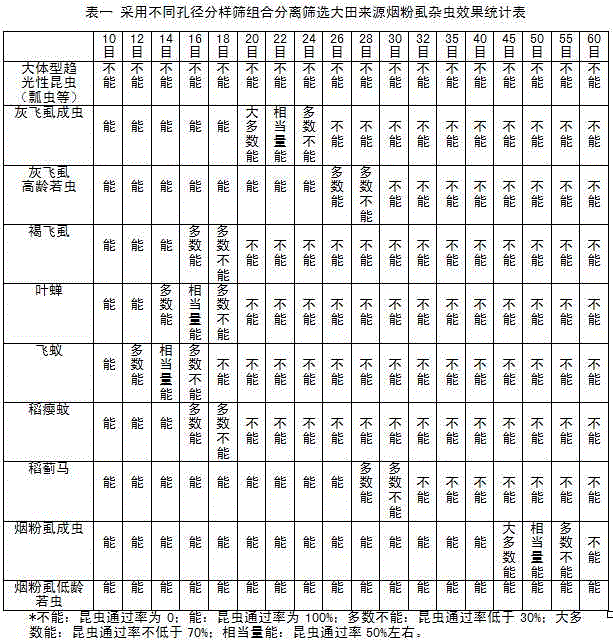A kind of inoculation identification method of soybean resistance to whitefly virus disease
An identification method and technology of Bemisia tabaci, applied in the field of agricultural science, can solve the problems of agricultural production loss, the identification results are easily affected by the environment, and the scope of application is limited.
- Summary
- Abstract
- Description
- Claims
- Application Information
AI Technical Summary
Problems solved by technology
Method used
Image
Examples
Embodiment 1
[0036] On the night of August 5, 2013, an insect trap lamp was installed in the field to trap live adults of Bemisia tabaci. After one night of trapping, a large number of Bemisia tabaci were collected in the accumulation bottle, which also contained a large number of miscellaneous insects. The purification and screening device for planthopper adults (ZL 201310290925.X) was used for separation and screening. In order to separate pure whitefly adults with uniform ages, a combination of sampling sieves with different apertures was tested and counted by visual observation.
[0037]
[0038] The screening investigation found that the combination of 45-55 mesh sub-sampling sieves can effectively screen out the dead insects of Bemisia tabaci, impurities and no (weak) phototaxis insects, large phototaxis insects, small phototaxis insects and juvenile Bemisia tabaci nymphs. Interference, effective isolation of uniform whitefly adults.
Embodiment 2
[0040] 1. The difference between using this technology to identify soybean yellow mosaic disease and identifying soybean yellow mosaic disease naturally occurring in the field
[0041] In 2013, the field natural disease identification method was used to investigate the incidence of soybean yellow mosaic disease in several severely affected areas of soybean bemisia tabaci, and at the same time, this technology was used to identify the incidence of soybean yellow mosaic disease.
[0042] Analyzing Table 2, it was found that there was a significant difference in the incidence of soybean yellow mosaic disease between the five soybean varieties identified by this method and the natural disease identification in the hardest-hit areas, and the relative resistance-sensitivity ratios of the other four varieties relative to the incidence of yellow mosaic disease in Ludou No. 10 were also different. Mostly significant, Huapidou and Langziwei's yellow disease incidence relative to resistan...
PUM
 Login to View More
Login to View More Abstract
Description
Claims
Application Information
 Login to View More
Login to View More - R&D
- Intellectual Property
- Life Sciences
- Materials
- Tech Scout
- Unparalleled Data Quality
- Higher Quality Content
- 60% Fewer Hallucinations
Browse by: Latest US Patents, China's latest patents, Technical Efficacy Thesaurus, Application Domain, Technology Topic, Popular Technical Reports.
© 2025 PatSnap. All rights reserved.Legal|Privacy policy|Modern Slavery Act Transparency Statement|Sitemap|About US| Contact US: help@patsnap.com


